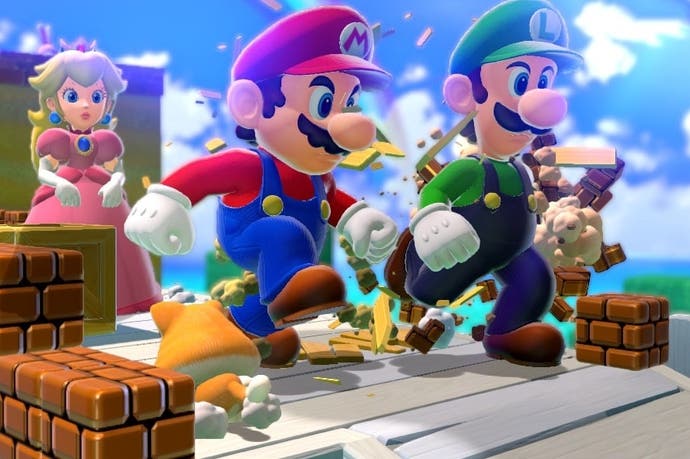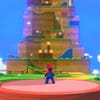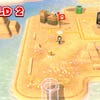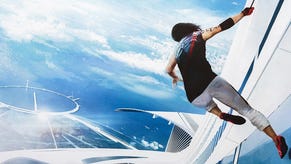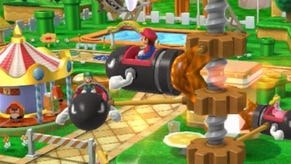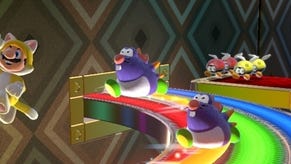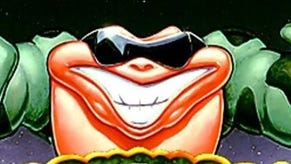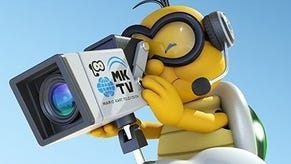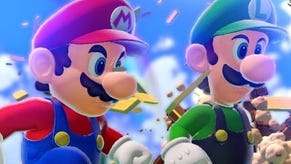Digital Foundry vs. Super Mario 3D World
Next-gen gaming, Nintendo-style.
Regarded by many as one of the finest games of 2013, Super Mario 3D World serves to remind us of a day when console games were released as complete, polished products free of day-one patches and DLC. It also marks Nintendo's first full 3D Mario outing on an HD console, finally allowing the series aesthetic to break free of its standard-definition shackles. We already know the game itself lives up to expectations, but the technology behind 3D World plays a critical role in that success.
There have been rumours and statements suggesting that HD development was proving more challenging for Nintendo than anticipated. EAD Tokyo is known for releasing polished gems, but we've seen even great developers stumble during the transition to HD before. Despite these difficulties, Super Mario 3D World stands as one of the most polished titles we've played, which, given the amount of unique content, is no small feat. At a glance, the visuals may not appear particularly astounding, but the skill with which Nintendo has managed to mesh modern technology with great art certainly is and Super Mario 3D World is a textbook example of how to build a classic in the modern age.
Last year's New Super Mario Bros U already gave us a taste of what a higher resolution can do for Nintendo's designs but 3D World provides an even clearer example of this. Assets appear to have been created from the ground up for the Wii U this time around and image quality is sharp and clean, operating with a full 1280x720 framebuffer. Basic edge-detection, not unlike what was utilised in NSMBU, handles anti-aliasing duties but coverage can be a bit spotty at times - results are surprisingly inconsistent on a per-stage basis, with certain areas appearing remarkably free of aliasing while others seem quite jaggy. Thankfully, the smart visual design generally overcomes most instances where this would prove bothersome. While we would like to see Nintendo embrace a more sophisticated approach to anti-aliasing in the future, it's hard to complain about the end results here.
Image quality is further aided by the heavy use of depth-of-field throughout the game. Basically, any objects drawn beyond a set distance from the camera utilise this technique, creating a bit of a tilt-shift aesthetic as a result. This also has the added bonus of smoothing distant objects, preventing shimmering and aliasing from cropping up in the far background. We've seen this technique used before with Nintendo's games but it has never before been applied as elegantly as we see here.
"At a glance, the visuals may not appear particularly astounding, but the skill with which Nintendo has managed to mesh modern technology with great art certainly is, and Super Mario 3D World is a textbook example of how to build a classic in this modern age."
Elsewhere we see a full selection of modern visual features implemented throughout the experience. For the first time in a 3D Mario title, light and shadow are taken into proper account. Full shadows are cast across the world while dynamic lights are used extensively to both highlight player actions and set the mood. With most objects in the world consisting of solid shapes, there are very few instances where shadow artefacts can be spotted. Making a return from the Galaxy series, we also see the inclusion of an enhanced rim lighting technique. Now more than ever this subtle highlight enhances both depth and texture detail across characters.
There is also some attention paid to the manner in which light interacts with the world. The way light pours around the edges of objects against a bright blue sky, for instance, is one such subtle but beautiful effect. Light shafts - an effect new to Nintendo's software - also make an appearance during various sequences, such as Bowser's first castle. Implementing these types of effects is one thing but doing so in such a tasteful manner really gives the impression that they are used only when they make sense artistically. This is a package where the design drives the technology rather than the other way around.
Overall, the presentational make-up of the game is best described as cohesive: there is a sense that close attention was paid to the way every texture interacts with other surfaces in each stage, and how light and shadow are used to enhance each scene. The use of heat waves, tumbling leaves, gusts of wind, cloud shadows, right down to the shaders used to imitate rustling grass all help to enhance the presentation. The game world is always in motion and feels more alive than in any other Mario title to date.
"Implementing modern rendering techniques is one thing but this is a package where the design drives the technology rather than the other way around."
As expected, artwork is of high quality throughout with a huge variety of assets on-hand keeping things fresh. Unlike NSMBU, Super Mario 3D World manages to leave behind any connection to previous adventures on the Wii, feeling fresh, vibrant and exciting - always leaving you hungry to see what's on the next stage. Levels are constructed from relatively basic shapes - as is tradition for the series - but great care is taken with each and every model to ensure that edges are rounded and smooth. The game still uses basic themes for its over-world, such as ice and desert, but the stages contained within never feel constrained by these themes. It's rather surprising just how many one-off ideas appear in this game: from the ice skating section to the Mario Kart tribute, Nintendo never seems to shy away from implementing ideas in a single-use capacity. The fact that Nintendo was able to provide so many unique stages and ideas while maintaining a high level of polish speaks volumes about its design process.
There's actually very little to be critical about from a technical standpoint here. Sure, we were able to notice minor flaws including lower-resolution depth-of-field and alpha effects, minor aliasing, and a lack of anisotropic filtering. Keeping in mind the limitations of the hardware, however, we feel the right trade-offs are made in order to hit the very strict performance target. It's a balance that few developers seem to strive for these days and one that has seemingly become commonplace with Wii U exclusive titles. Nintendo's output has been extremely consistent in delivering a perfect balance of performance and visual quality.
All of these features would be for nothing if the performance wasn't there, of course. Mario titles demand precision and a quick response that call for a solid 60 frames per second update. More so than most games aiming for this goal, EAD has managed to deliver a 100 per cent consistent update. Every moment of the game, every menu transition, and every element of the user interface all operate at 60fps without a single hitch. Shooting for 60fps is no small task and requires cooperation from the entire team throughout the development cycle, but Nintendo takes it further by taking a zero-tolerance approach to frame-rate dips.
"What Nintendo proves is that a great technology base is necessary in order to deliver world class gameplay. Say what you will about its place in the market but it clearly understands what it takes to produce a classic."
Despite this, there is never a sense that level design is compromised in order to reach this goal. Perhaps Mario benefits from the fact that some of the more demanding elements - such as physics simulations or a face-full of alpha textures - simply don't need to exist within the game framework. When it comes to designing a classic, however, it is perhaps a trade-off more developers should consider. The console version of Sonic Generations, for instance, was a beautiful game but the team's ambitions also meant that the frame-rate was lower and unstable, impacting the overall experience. Sometimes making the right sacrifices are necessary when it comes to reaching the desired level of performance and Super Mario 3D World stands as one of the best examples of this principle in action.
Ultimately, Super Mario 3D World stands alongside a number of other exclusive Wii U titles with its focus on clean visuals operating at a high frame-rate. The Wii U may not be the most powerful console on the block, but the fast, colourful, and clean library that it is amassing certainly suggests that it's more than ample. Emulators have already proven just how beautiful Nintendo's Wii efforts could be operating in high definition, and the Wii U is finally offering a way to experience these titles natively with good image quality. Years down the road, Super Mario 3D World is the type of game that will continue to look attractive in the face of even new technology.
With Nintendo's struggles in making the leap to HD game development there were concerns that it may encounter some of the pitfalls encountered by other Japanese developers last generation. That may have indeed occurred, but the end product certainly doesn't show it. When examining the technical merits of games, the argument is often raised that gameplay is more important than technology. What Nintendo proves is that a great technology base is necessary in order to deliver world-class gameplay. Say what you will about Nintendo's place in the market, but it clearly understands what it takes to produce a classic.
